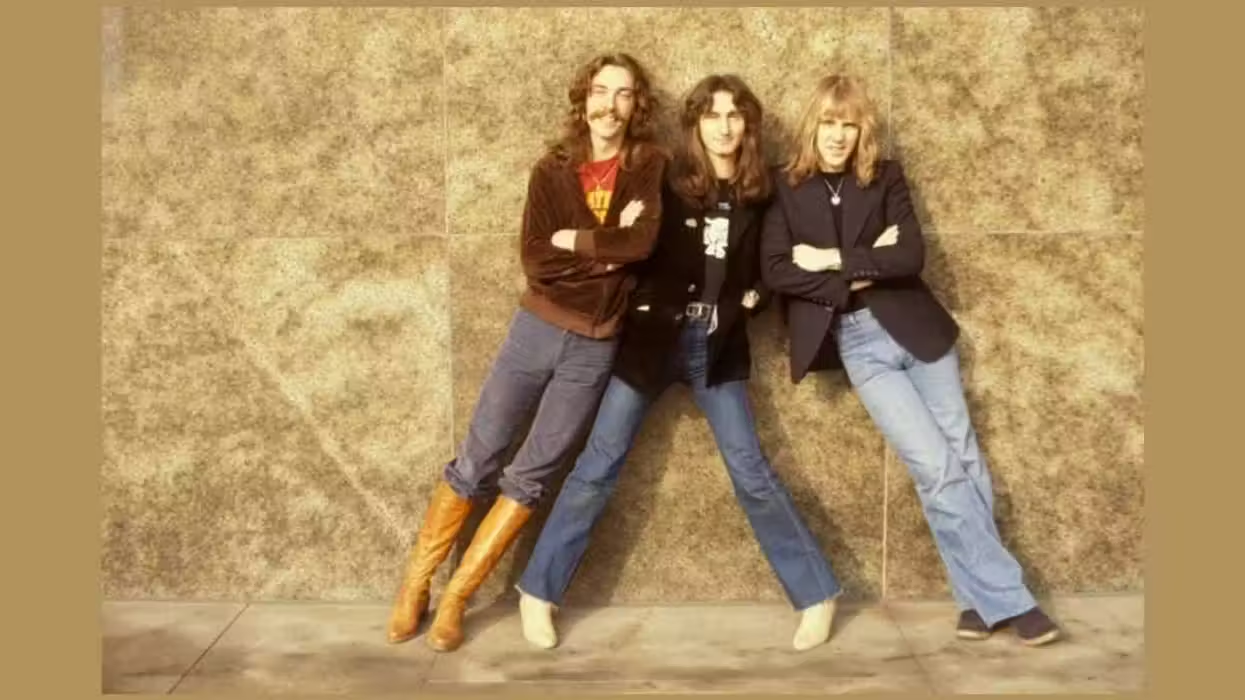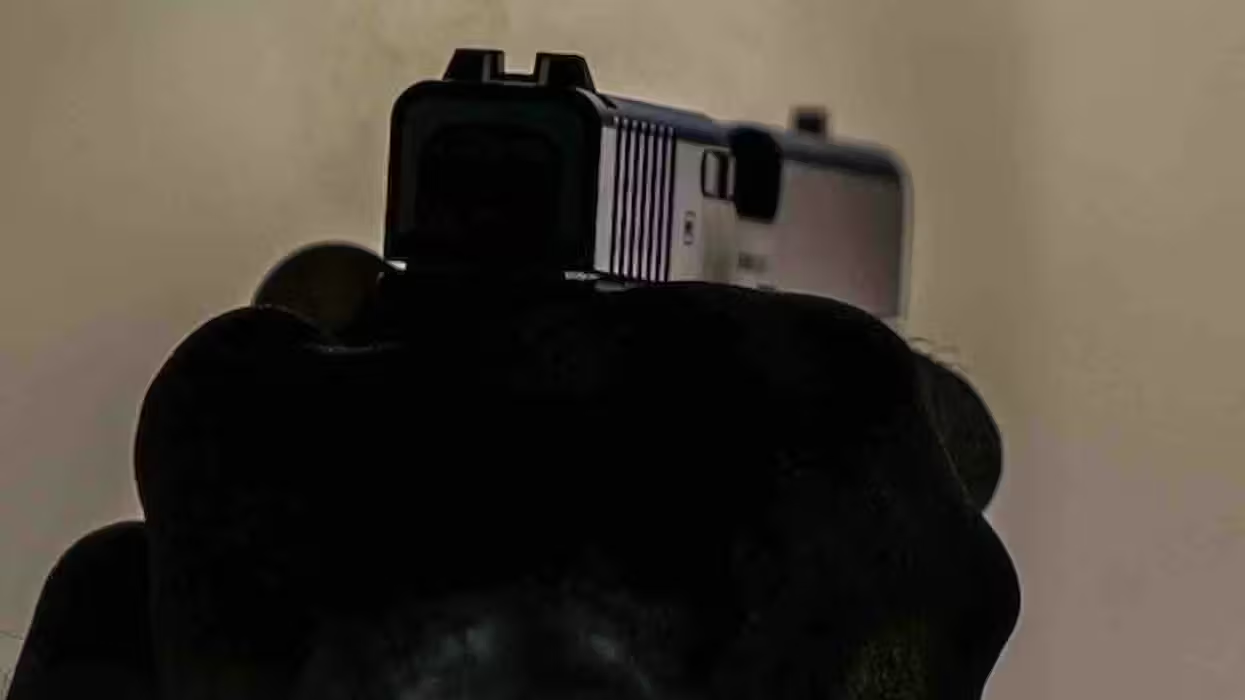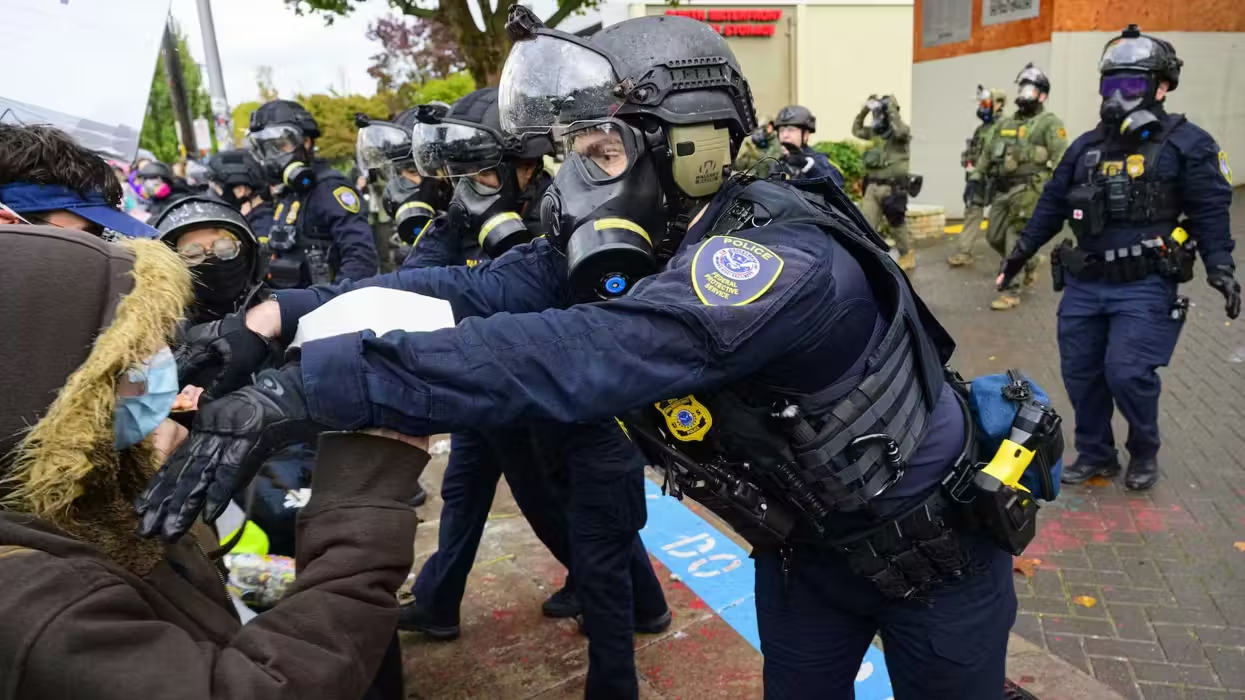© 2026 Blaze Media LLC. All rights reserved.
An inconvenient assesment for the left.
In the 2012 election, one candidate took advantage of the loosening of campaign finance to rack up over a billion dollars in donations, spend nearly three times as much as his opponent on mostly negative ads, and break records for total amount of spending. His name was Barack Obama.
Two years ago, the Supreme Court handed down the landmark case of Citizens United v. Federal Election Commission, a case heralded by many as a step forward for free speech and denounced by just as many as a decision that would sell America down the river to corporate interests for as long as it was considered binding law.
The explosion of money in politics gave birth to Super PACs, a new class of billionaire donors, and even (arguably) the Occupy Wall Street mass movement, which consistently placed the reversal of Citizens United at or near the top of all unofficial lists of demands it released.
There is little doubt that the explosion of money in this year's race has fundamentally altered the dynamics of campaigning in American politics. Both the Obama campaign and the Romney campaign have raised money in the neighborhood of a billion dollars just on their own (Obama just a little over, and Romney just a little under).
Super PACS have layered on top of them even further, flooding swing states especially with ad after ad. Candidates previously thought to be dead have hung on longer than they otherwise would because of the support of particular billionaires, while the loss of funding from independent sources overmissteps may cost some previous favorites their victory.
So given money's transformative power in this race, and given that we now know the outcome, we should ask the obvious question: What effect, precisely, has the money had? The answer is that, despite the fury of the Left over the potential of Citizens United to skew the election on behalf of corporate power, that has not happened. In fact, the amount of money spent in the election has been relatively even on both sides, and certainly even the supposedly Leftist, anti-business Obama campaign has been able to raise over $1 billion this election cycle.
And how was that massive amount of money spent? Here we turned primarily to the one institution that almost exclusively focuses on tracking money - the Wesleyan Media Project in Middletown, Connecticut, which has been tracking the amount of money spent by the two Presidential campaigns, as well as all Super PACs, since the election began.
Wesleyan's table tabulating the final amount of election spending follows:
| Table 1: Top Spenders in Presidential Ad Race (April 11 to October 29) | ||||
| Sponsor | Affiliation | Est.Cost | Ads Aired | # of markets |
| Barack Obama | Democrat | $265,981,040 | 503,255 | 63 |
| Mitt Romney | Republican | $105,393,980 | 190,784 | 78 |
| Restore Our Future, Inc. | Republican | $57,611,970 | 60,366 | 64 |
| American Crossroads | Republican | $56,864,790 | 64,441 | 60 |
| Crossroads GPS | Republican | $45,886,280 | 74,092 | 67 |
| Americans For Prosperity | Republican | $35,936,760 | 43,091 | 55 |
| Priorities USA Action | Democrat | $32,486,610 | 53,612 | 32 |
| RNC & Mitt Romney | Republican | $23,936,420 | 32,638 | 42 |
| Republican National Committee | Republican | $21,420,260 | 31,258 | 69 |
| DNC & Barack Obama | Democrat | $15,309,090 | 7,210 | 53 |
| Americans For Job Security | Republican | $9,409,230 | 8,838 | 36 |
| American Future Fund | Republican | $6,950,330 | 6,722 | 42 |
| Republican Jewish Coalition | Republican | $4,648,330 | 3,136 | 4 |
| Concerned Women For America | Republican | $4,400,360 | 3,132 | 21 |
| Planned Parenthood Action Fund | Democrat | $3,387,130 | 3,160 | 6 |
| Thomas Peterffy | Republican | $1,481,580 | 653 | 11 |
| SEIU COPE | Democrat | $1,277,790 | 1,512 | 4 |
| NRA Political Victory Fund | Republican | $1,158,380 | 2,187 | 19 |
The numbers show a relatively even race, and the fact that President Obama's own campaign tops the list certainly does much to refute the perception that increased money in politics necessarily favors the Right. President Obama's victory, which surprised many, but was forecast with increasing certainty in the polls leading up to election day, also shows a strong correlation with this massive amount of spending by his campaign. The Romney camp, meanwhile, spent much less, with most of their financial advantage coming from outside groups such as Super PACs.
This financial advantage was a persistent feature of the 2012 election cycle. Immediately following the Democratic National Convention, Obama's post-convention "bounce" was, as the Wesleyan Media Project documented at the time, merely an effect of Obama outspending the Romney campaign 2 to 1 over the previous two weeks, and 7 to 1 overall. Here is their chart from that period:
Table 1: Ad Airings by Sponsor in Past Two Weeks
| |||||||
| Sponsor | Est. spending | # Ads | Favored candidate | ||||
| Barack Obama | $19,598,700 | 37,230 | Obama | ||||
| Americans For Prosperity | 5,607,000 | 7,354 | Romney | ||||
| Mitt Romney | 3,344,530 | 4,503 | Romney | ||||
| American Crossroads | 1,039,550 | 2,819 | Romney | ||||
| Priorities USA Action | 1,056,120 | 2,764 | Obama | ||||
| Restore Our Future | 2,486,570 | 2,711 | Romney | ||||
| DNC & Barack Obama | 280,310 | 606 | Obama | ||||
| SEIU Cope | 186,390 | 374 | Obama | ||||
| RNC & Mitt Romney | 264,480 | 308 | Romney | ||||
| Susan B. Anthony List | 135,270 | 84 | Romney | ||||
| *Totals are from August 26 through September 8. Numbers include broadcast television and national cable spots.SOURCE: Kantar Media/CMAG with analysis by the Wesleyan Media Project | |||||||
It was only in the last month of the election, on the other hand, when the Romney campaign managed to keep pace with the Obama campaign in spending, perhaps accounting for a decent share of their increased standing in the polls. However, by that point it was probably too little, too late, considering the campaign was also the most negative yet.
Table 6: Tone in Presidential Advertising by Favored Candidate (2000-2012)
| Promote | Contrast | Attack | ||
2012 | pro-Obama | 2.5% | 33.7% | 63.8% |
| pro-Romney | 15.4% | 23.3% | 61.3% | |
2008 | pro-Obama | 27.7% | 18.4% | 53.9% |
| pro-McCain | 31.6% | 8.5% | 59.9% | |
2004 | pro-Kerry | 56.8% | 41.9% | 1.3% |
| pro-Bush | 43.1% | 17.3% | 39.6% | |
2000 | pro-Gore | 22.7% | 33.6% | 43.7% |
| pro-Bush | 70.5% | 12.5% | 17.0% | |
| Percentages based on an analysis of broadcast television and national cable spots aired from Sept 9 - Sept 30 for each year. Totals in 2012 are based on ongoing Wesleyan Media Project coding of Kantar Media/CMAG presidential airings. 2000-2008 percentages are from the Wisconsin Advertising Project. | ||||
Money also led to the defeat of several other relatively tenacious candidates. In Missouri, Todd Akin was arguably most crippled after nearly every major conservative advocacy group pulled their support for his campaign. However, in general, the relation between spending and victory on the Senate side was muddier, as many races where the amount of spending was more or less even produced lopsided results:
| Race | Total $ | Dem $ | Rep $ | % IG | ||||
| Ohio | $6,006,570 | $2,588,710 | $3,417,860 | 53.2% | ||||
| Massachusetts | $5,920,670 | $2,990,630 | $2,930,040 | 0.0% | ||||
| Virginia | $4,996,680 | $2,496,410 | $2,500,270 | 52.3% | ||||
| Florida | $4,573,340 | $1,946,940 | $2,626,400 | 47.7% | ||||
| Nevada | $4,142,620 | $1,997,510 | $2,145,110 | 45.4% | ||||
| Connecticut | $3,724,510 | $921,810 | $2,802,700 | 4.1% | ||||
| Indiana | $3,716,230 | $1,573,450 | $2,142,780 | 44.0% | ||||
| Wisconsin | $3,636,860 | $1,982,070 | $1,654,790 | 48.3% | ||||
| Pennsylvania | $3,049,390 | $823,480 | $2,225,910 | 0.0% | ||||
| Arizona | $1,868,990 | $1,462,270 | $406,720 | 5.6% | ||||
| New Mexico | $1,813,060 | $840,490 | $972,570 | 12.1% | ||||
| Montana | $1,738,280 | $813,980 | $924,300 | 29.9% | ||||
| Missouri | $1,599,730 | $1,370,550 | $229,180 | 6.0% | ||||
| North Dakota | $1,021,470 | $517,780 | $503,690 | 37.5% | ||||
| Nebraska | $933,450 | $546,300 | $387,150 | 24.4% | ||||
| Numbers include broadcast television. | ||||||||
| SOURCE: Kantar Media/CMAG with analysis by the Wesleyan Media Project. | ||||||||
So what might account for this apparent divorce in the Senate races? The answer is unclear, but in all likelihood, the more even distribution of tone may have been involved, as well as a few trickle-down effects from the admittedly lopsided Presidential contest. For instance, in many states, Obama's coattails pulled candidates with even spending to victory (Ohio, Massachusetts), whereas in others incompetent candidates took themselves out of the running (Indiana).
In short, the story of this election is precisely the story many Leftists feared would occur following Citizens United: The story of a triumph of one campaign which massively outspent its rivals and dragged them down using relentlessly negative, fear-driven campaigning, with a result that projected decisive coat tails.
The twist, of course, is that it was the Left's own campaign that did it.
Want to leave a tip?
We answer to you. Help keep our content free of advertisers and big tech censorship by leaving a tip today.
Want to join the conversation?
Already a subscriber?
more stories
Sign up for the Blaze newsletter
By signing up, you agree to our Privacy Policy and Terms of Use, and agree to receive content that may sometimes include advertisements. You may opt out at any time.
Related Content
© 2026 Blaze Media LLC. All rights reserved.
Get the stories that matter most delivered directly to your inbox.
By signing up, you agree to our Privacy Policy and Terms of Use, and agree to receive content that may sometimes include advertisements. You may opt out at any time.






